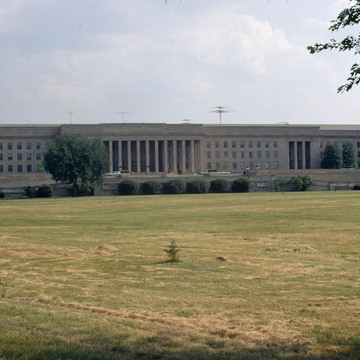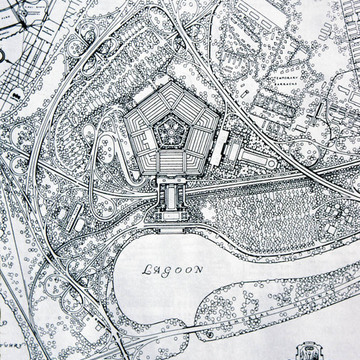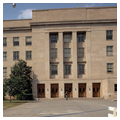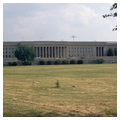Perhaps best known as a symbol or a mind set, the Pentagon is among Virginia's famous buildings, and, at 6,240,000 square feet, one of the world's largest office structures. Intended to house under one roof all federal defense headquarters operations (approximately 25,000 workers), it was designed as war clouds gathered in mid-1941. Bergstrom and Witmer were from Los Angeles and got the commission through positions they held in the American Institute of Architects (AIA). The pentagonal form was a vague reference to traditional fortifications. Bergstrom and Witmer's original plan contained internal barrackslike fingers, but personnel in the quartermaster general's office changed the floor plan to concentric interior rings of office spaces, an arrangement which appealed to the efficient military mind. The 4,600-foot limestone exterior has squared piers in the “stripped” or “modernized” classical idiom common to the 1930s. The most remarkable feature of the building, though, was its construction time: only sixteen months, from September 1941 to December 1942.
The Pentagon assumed a new role as a symbol after the terrorist attack of September 11, 2001, when a hijacked airliner crashed into the west side, penetrating three office rings and killing 125 office and military personnel in the building and 64 passengers and crew on the plane. The section is being rebuilt and a memorial is planned for the grounds in front.










